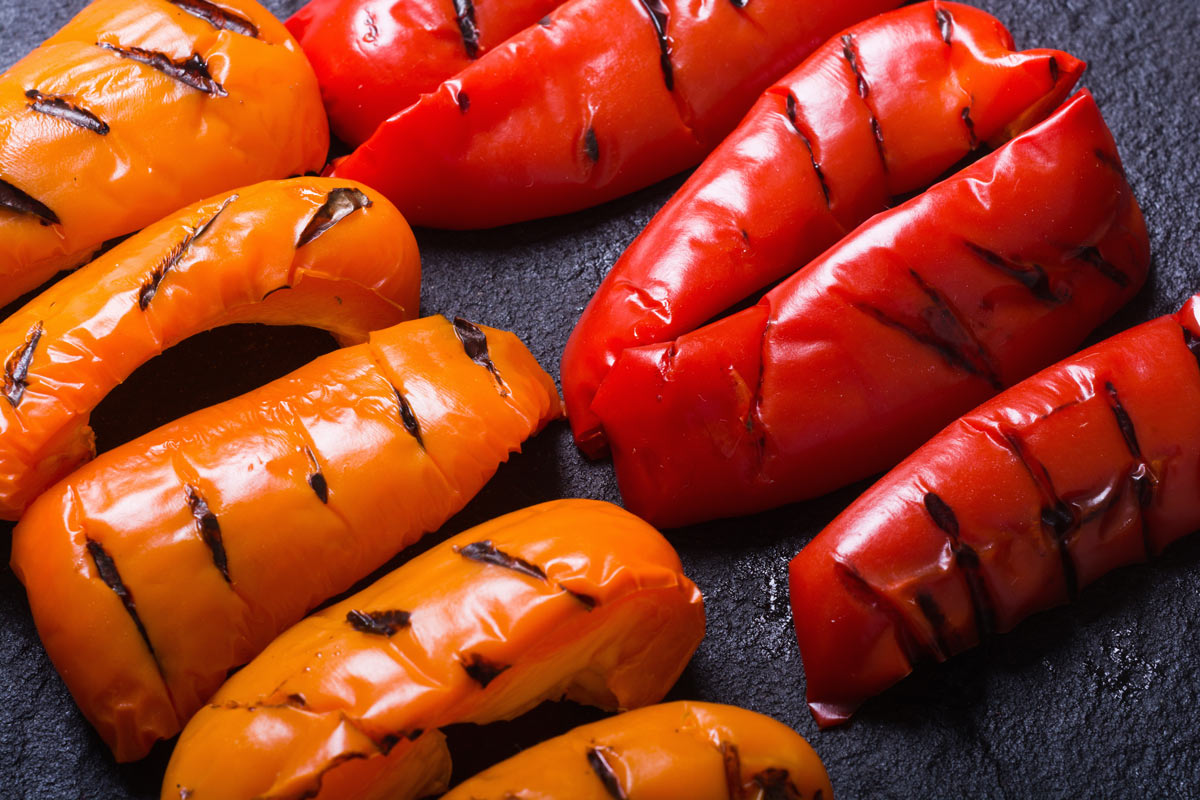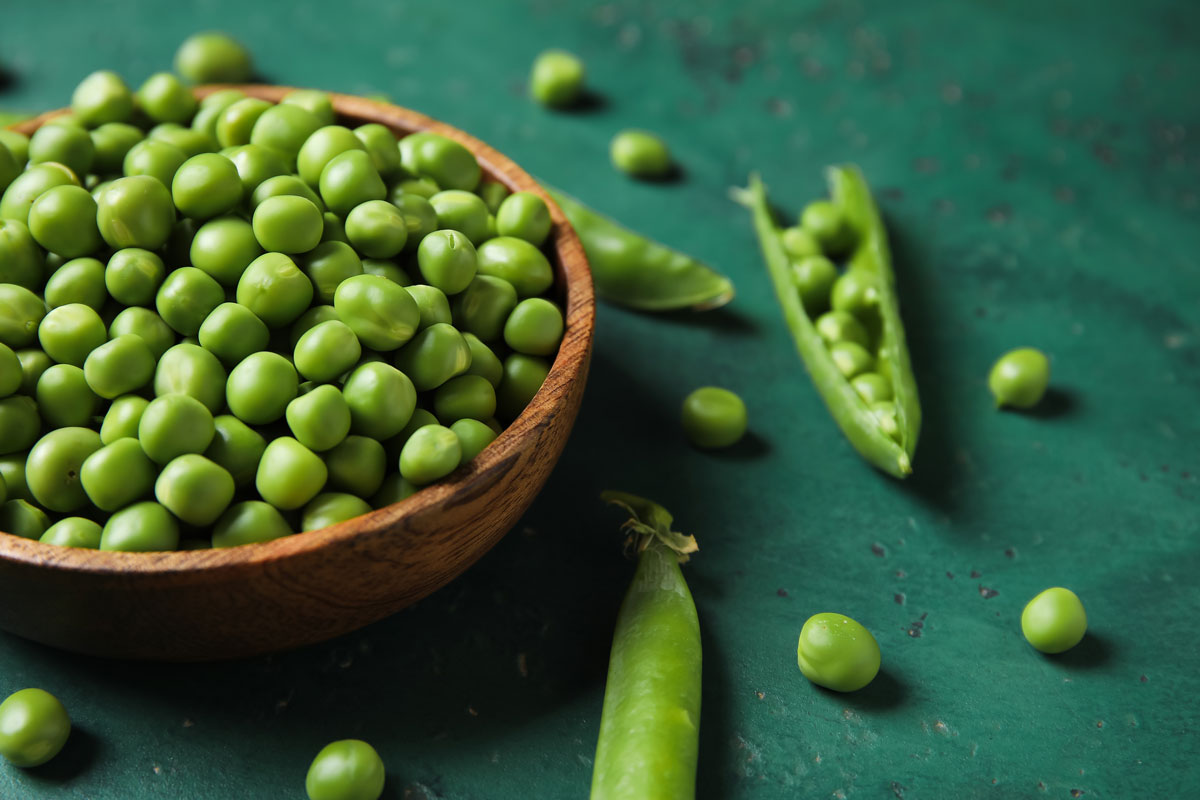Chicken Skillet Dinner Recipe, Spotlight on Chicken Thighs, Parboiling Potatoes, Fruit and Veggies for Better Sleep and Exercising A Cancer-Fighting Plan
Craving a flavorful meal that’s complex only in its taste? This dish with chicken thighs and potatoes fits the bill. Perfect for cooler weather, it’s hearty and satisfying. And, according to new research on sleep, its veggies may bring you closer to restful shut-eye—read about the correlation below. This issue’s other research recap is on a hopeful benefit of exercise: How it can help stymie the growth of cancer cells as part of an overall cancer-fighting plan.
Chicken Skillet Dinner
 Chicken Skillet Dinner
Chicken Skillet DinnerThis double dose of chicken plus vegetables delights by affording rich flavor and cooks all in one pan.
Ingredients
- 1 pound fingerling or red potatoes, halved lengthwise
- 1 tablespoon plus 1 teaspoon coarse sea salt
- 1/4 cup whole wheat flour
- 1/2 teaspoon freshly ground black pepper
- 1 pound chicken thighs
- 4 tablespoons extra virgin olive oil, divided use
- 8 ounces chicken sausage links, cut into 2″ slices
- 8 ounces button mushrooms, halved
- 1 yellow onion, halved and sliced into thin sections
- 4 garlic cloves, finely minced
- 1/2 teaspoon rosemary needles
- 1 cup white wine
- 2 cups homemade or store-bought low-sodium chicken broth
Directions
Step 1
Place the potatoes in a large pot and fill three-quarters with water; add the tablespoon of salt. Bring to a boil and cook for 7 minutes. Drain and set aside.
Step 2
In a large bowl, mix the flour, teaspoon of salt, and pepper. Cut each chicken thigh into thirds and toss in the flour mixture to coat; place next to your stovetop.
Step 3
Heat a large skillet or wok over medium heat. When hot, add 2 tablespoons olive oil and add the sausage slices. Cook for 5 minutes, flip with tongs, and cook for another 5 minutes. Move the sausage to the outside of the pan and add the chicken thighs; brown them on all sides. Add the mushrooms and sauté until browned on the edges. Use a slotted spoon to transfer the meat and mushrooms to a bowl next to your stovetop.
Step 4
Add the rest of the olive oil and the onions to the hot skillet and cook for 5 minutes, until soft. Add the potatoes in one layer, sprinkle with the garlic and rosemary, and let cook undisturbed for 5 minutes to brown the edges; flip and repeat. Transfer the potatoes to the bowl with the meat and deglaze the skillet with the wine, scraping up any bits from the bottom of the pan. Let the wine reduce by half.
Step 5
Add the meat and vegetables back to the skillet along with the chicken stock. Bring the liquid to a boil, then lower the heat to a simmer and let the stock cook down until it thickens to a sauce and an instant-read thermometer registers 165°F when you test a few pieces of the thighs.
Yields 4 servings

Healthy Ingredient Spotlight
Chicken Thighs
I love the deeper flavor of chicken thighs and the convenience of skinless, boneless ones. However, roasting or baking with the bone in can be even more flavorful and less expensive—just pull off the skin when it’s not called for.
Chicken thighs are a good source of protein, with about 27 grams per 4-ounce serving and just a moderate amount of fat. They’re also a good source of B vitamins and the minerals iron and zinc.

Quick Kitchen Nugget
Parboiling Potatoes

Skillet potatoes are delicious, but it can take quite a bit of time for the potatoes to cook through. Parboiling to the rescue—this short boil partially cooks the spuds, softening not only the inside but also the outside and releasing a layer of gelatinized starch that helps the potatoes crisp up when they’re transferred to a stovetop skillet to finish cooking.
To parboil potatoes or any other hard vegetable, cut them as desired and add to a stockpot. Fill it three-quarters of the way with cold water and a tablespoon of coarse sea salt. Bring the water to a boil and set a timer for 7 minutes. You should be able to easily pierce a piece or two of potato with a fork, but they should not fall apart. If necessary, transfer them to layers of paper towels and blot dry.

For Your Best Health
Fruit and Veggies for Better Sleep
We all know about the benefits of eating vegetables and fruit for overall health, but there’s another reason to add them to the menu today: sleeping more soundly tonight. “Dietary modifications could be a new, natural, and cost-effective approach to achieve better sleep,” said Professor Esra Tasali, MD, director of the UChicago Sleep Center and co-senior author of the study, “Higher daytime intake of fruits and vegetables predicts less disrupted nighttime sleep in younger adults,” published in Sleep Health: The Journal of the National Sleep Foundation.
Sleep disruptions can have far-reaching negative consequences, impacting cardiovascular and metabolic health, memory, learning, productivity, mood regulation, interpersonal relationships, and more. “The temporal associations and objectively measured outcomes in this study represent crucial steps toward filling a gap in important public health knowledge,” said Dr. Tasali.
Studies have shown that inadequate sleep can cause people to gravitate toward unhealthier diets that are higher in fat and sugar. However, despite the far-reaching effects of sleep on public health and even economic productivity, not all that much is known about how diet can affect sleep patterns. In previous observational studies, high fruit and vegetable intakes were associated with better self-reported overall sleep quality. However, this new study was the first to draw a temporal connection between a given day’s dietary choices and objectively measured sleep quality that same night.

Healthy young adults who participated in the study reported their food consumption each day with an app and wore a wrist monitor that allowed the researchers to empirically measure their sleep patterns. The researchers, including scientists from Columbia University and the University of California San Diego, specifically looked at “sleep fragmentation,” an index that reflects how often someone awakens or shifts from deep to light sleep throughout the night. They found that each day’s diet was correlated with meaningful differences in the subsequent night’s sleep. Participants who ate more fruits and vegetables during the day tended to have deeper, more uninterrupted sleep that same night, as did those who consumed more healthy carbohydrates such as whole grains.
Based on their findings and statistical modeling, the researchers estimate that people who eat the CDC-recommended five cups of fruits and veggies per day could experience a 16% improvement in sleep quality compared to people who consume no fruits or vegetables.
“Sixteen percent is a highly significant difference,” Dr. Tasali said. “It’s remarkable that such a meaningful change could be observed within less than 24 hours.”
Future studies will help establish causation; broaden the findings across diverse populations; and examine the underlying mechanisms of digestion, neurology, and metabolism that could explain the positive impact of fruits and vegetables on sleep quality. But based on current data, the experts confidently advise that regularly eating a diet rich in complex carbohydrates, fruits, and vegetables is best for long-term sleep health.
“People are always asking me if there are things they can eat that will help them sleep better,” says co-senior author Professor Marie-Pierre St-Onge, PhD, director of the Center of Excellence for Sleep & Circadian Research at Columbia. “Small changes can impact sleep. That is empowering—better rest is within your control.”

Fitness Flash
Exercising A Cancer-Fighting Plan
A vigorous workout can spark anti-cancer proteins, cut cancer cell growth, and help survivors fight recurrence by reducing inflammation and improving body composition, according to new research from Edith Cowan University (ECU). ECU PhD student Francesco Bettariga found that a single bout of either resistance or high-intensity interval training increased levels of myokines, a protein produced by muscles, which have anti-cancer effects and that could reduce the proliferation of cancer growth by 20% to 30%. His research with survivors of breast cancer measured myokine levels before, immediately after, and 30 minutes after working out.
“Exercise has emerged as a therapeutic intervention in the management of cancer, and a large body of evidence exists that shows the safety and effectiveness of exercise as medicine, either during or post cancer treatment,” Bettariga said. “The results from this study are excellent motivators to add exercise as standard care in the treatment of cancer.”
While higher levels of myokines were expected in a healthy population after a vigorous workout, Bettariga investigated whether breast cancer survivors would see the same results, given the impact that cancer treatments and cancer itself often have on the body. He added that the long-term implications of elevated myokine levels should be further investigated, particularly in relation to cancer recurrence.
Further research by Bettariga investigated how changes in body composition, following consistent exercise, could impact inflammation, which plays a key role in breast cancer recurrence and mortality by promoting tumor progression. Persistent inflammation not only promotes tumor progression by influencing cell proliferation, survival, invasiveness, and metastasis but also inhibits immune function. Given that the cancer itself and the side effects of treatments can elevate levels of inflammatory biomarkers, survivors of breast cancer are at increased risk of cancer progression, recurrence, and mortality.
“Strategies are needed to reduce inflammation, which may provide a less-supportive environment for cancer progression, leading to a lower risk of recurrence and mortality in survivors of breast cancer,” he explained. The new research found that by reducing fat mass, which is responsible for releasing anti- and pro-inflammatory markers, and increasing lean mass, through consistent and persistent exercise, cancer survivors had a better chance at reducing inflammation. Unfortunately, quick fixes to reduce fat mass would not have the same beneficial effects, Bettariga stressed when he said, “You never want to reduce your weight without exercising, because you need to build or preserve muscle mass and produce these chemicals that you can’t do through just diet alone.”
Get More Recipes In Your Inbox!








